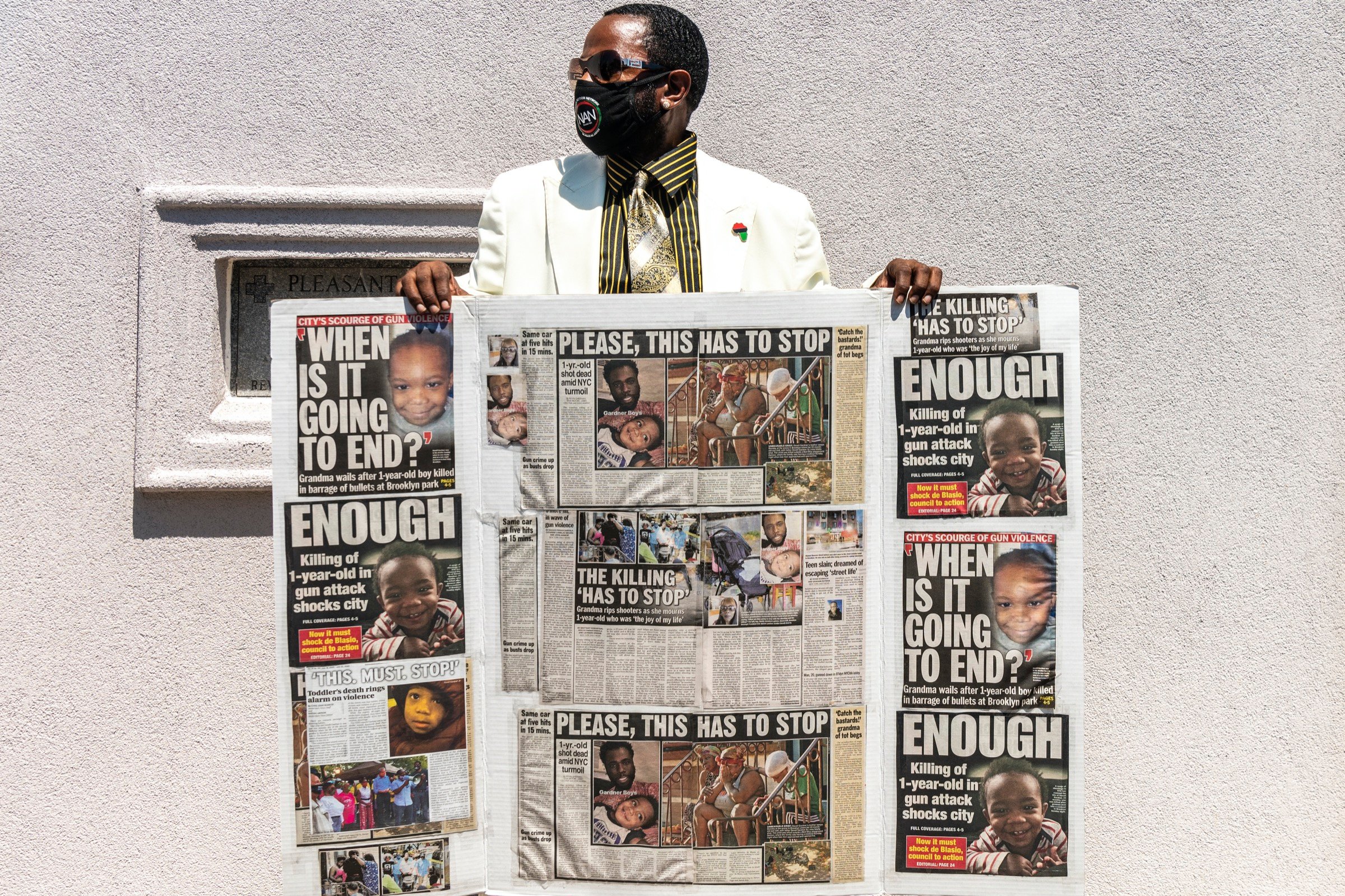This article concerns a preliminary study released on July 4, 2020, which was not peer reviewed or formally published in a journal. Updated research by the same authors, published in Injury Epidemiology on July 5, 2021, arrived at a different conclusion. While the initial study found a link between the surges in gun sales and levels of gun violence during the pandemic, the later one found no association between the two — with the exception of incidents of domestic violence in April and May 2020. The study’s lead author, Julia Schleimer, told The Guardian that to understand the increase in gun violence, researchers should examine “other factors, like job loss, economic change, the closure of schools and community organizations and nonprofits, and civil unrest.”
Gun purchases have soared during the coronavirus pandemic, and a new paper suggests that these additional firearms may be exacerbating violence around the country. In a paper pre-print released on July 4, researchers at the University of California, Davis found a link between excess gun sales over the past few months and increased rates of intentionally inflicted gun injuries and deaths.
In the new paper, which has not yet gone through the peer-review process that will subject it to vetting by other scientists, the researchers analyzed data from the FBI’s National Instant Criminal Background Check System from January 21 through May 31, 2020 in 48 states and Washington, D.C., to get a sense of how many people have been buying guns and where. They then compared those numbers to the same months in previous years.
The authors estimated that there were 2,109,177 excess firearm purchases in the U.S. in March through May 2020, a 64.3 percent increase over what would have been expected based on previous years. In the states where sales surged the most, they found, rates of violence also rose the most.
To understand what has happened to firearm violence during the pandemic, the researchers analyzed recent data from the Gun Violence Archive, a database of gun violence incidents collected from various sources, including law enforcement, media, and the government. They focused on intentional, interpersonal firearm violence, which includes firearm injuries and deaths due to domestic violence, home invasions, hate crimes, and mass shootings, and other conflicts — but, notably, not on accidental shootings or suicide. The researchers found that in May 2020 in particular, there were 633 excess gun-inflicted injuries — a 17.7 percent increase over expected levels.
It’s likely that other factors have contributed to the recent increase in shootings. Americans right now are anxious, scared, and experiencing economic hardship and painful evidence of racial inequality. “We’re in a unique time, with not only increases in firearm purchasing but increases in some of the factors that drive firearm violence, like trauma, economic strain, a sense of hopelessness, and racial and economic inequities,” said Julia Schleimer, a research data analyst with the UC Davis Violence Prevention Research Program and one of the authors of the new study.
The researchers statistically controlled for some contributing factors, like whether states had stay-at-home orders in place and how many coronaviruses cases and deaths they suffered. After doing so, the link between gun purchases and gun violence persisted.
The new findings echo earlier studies that have linked spikes in gun purchasing to firearm injury and violence. In a 2017 study, Wellesley College economist Philip Levine and his colleague Robin McKnight reported that when gun sales increased nationally after Sandy Hook, rates of accidental death increased, as well. And in 2019, UC Davis researchers found that when handgun purchases went up in California following the 2012 presidential election, firearm injuries increased over the course of the next year.
Levine, who was not involved in the new study, says that, based on his own recent analyses, reality may even be worse than this UC Davis research suggests. “According to my own research, excess gun sales in June equaled those in March, April, and May combined, suggesting that the results in this paper may considerably understate the number of individuals affected,” he said.
Schleimer added, “It’s possible that if rates of purchasing remain elevated, so too will rates of firearm violence.” In the next few weeks, she says, her team is going to update their findings to include June data.
The new findings are noteworthy considering evidence that homicides have increased in many American cities, even as overall violent crime has stayed the same or dropped.
The researchers from UC Davis suggest that states might want to implement policies to limit new gun purchases during the pandemic. States that do not have them may also want to pass extreme risk protection order laws that can temporarily separate people in crisis from their guns (19 states and Washington, D.C., currently have these laws in place). Communities may also want to hire more street-level violence prevention specialists to combat the ongoing gun violence surge.
Finally, Schleimer says, it’s important for scientists and politicians to communicate to the public that buying guns will not, in fact, make them safer. “An extensive body of literature shows that those who own firearms or live in homes with firearms are substantially more likely to die by firearm suicide, homicide, and unintentional firearm injury than people who live in homes without firearms,” she noted. “At the same time, firearms offer no unique benefits for deterring or obstructing crime.”


